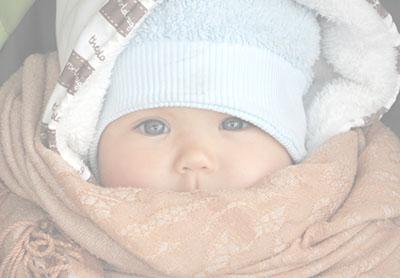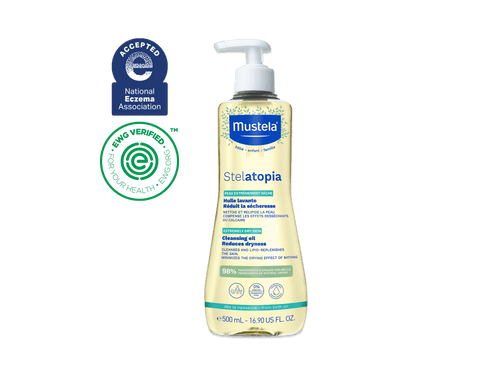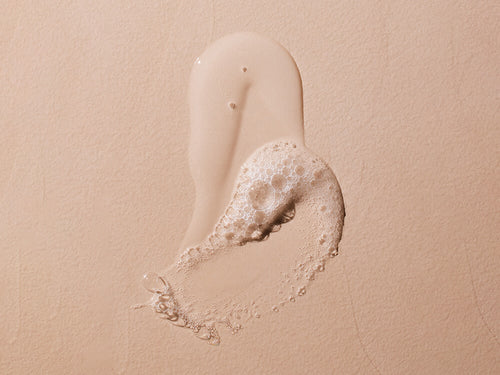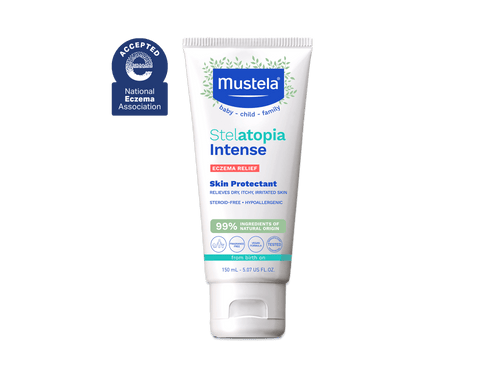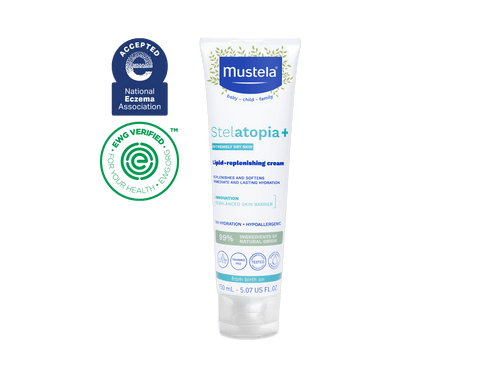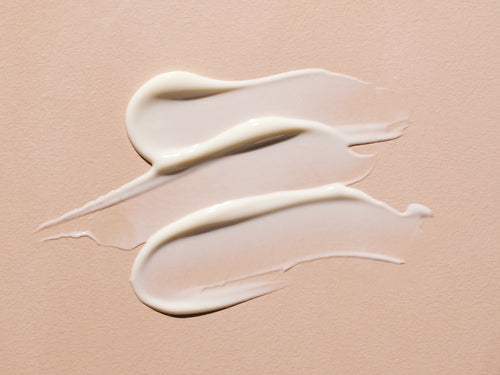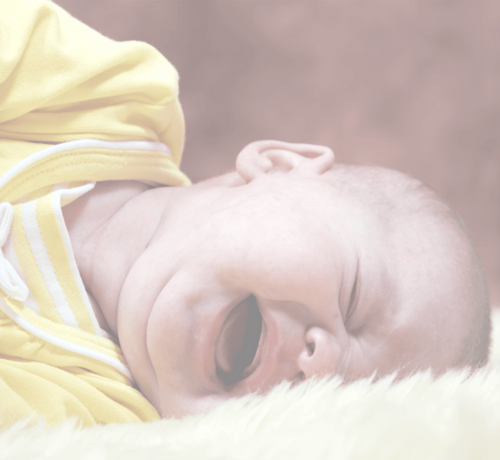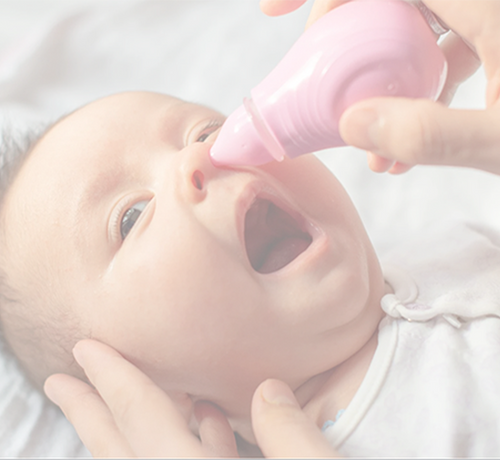Choosing the right clothes for your eczema-prone baby is about more than just fashion. It’s about avoiding the triggers that will irritate their sensitive skin and set off an eczema outbreak.
But what types of eczema clothes should you look for? What types of clothes should you stay away from? How can you ensure that your baby is warm enough, but not so hot that it causes an eczema flare-up? And what’s the best way to keep your baby’s clothes clean so they don’t irritate their sensitive skin?
Mustela’s experts will answer those questions and show you how to choose the right clothes to care for your baby’s eczema-prone skin.
The Right Clothes Should Be Soft And Breathable
The best thing you can do when choosing clothes for your sensitive-skinned baby is to make sure that everything is soft and breathable. It doesn’t matter if the fabric touches their skin directly or not. All shirts, pants, dresses, socks, hats, coats, gloves, blankets — everything — should be soft and breathable.
This rule serves two purposes:
- It keeps your baby comfortable even when they’re not suffering from a flare-up.
- It prevents flare-ups from occurring in the first place.
Both of those things are good news for you and your baby. Because when your baby is comfortable, you’re comfortable. Here are some specific tips you can use when deciding what eczema-safe clothes your baby should wear.
How To Choose, Use, And Care For Clothes For Eczema-Prone Skin
1) Natural Fabrics Only...But No Wool
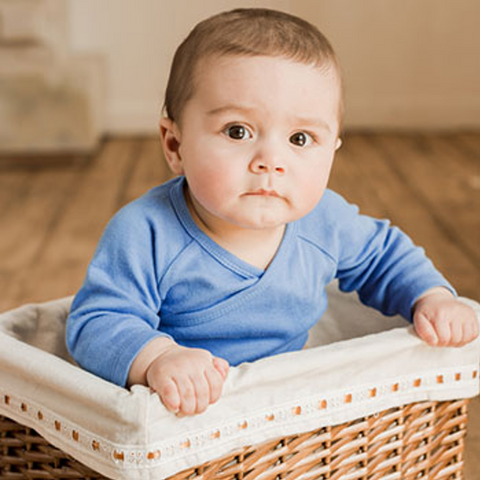
The easiest way to prevent clothes-based eczema flare-ups is to dress your baby in natural fabrics only. These include cotton, linen, silk, and hemp, just to name a few.
Whatever natural fabric you choose, it should be smooth, pliable, and pleasant to the touch. The only caveat to this “natural fibers” rule is you should avoid wool if at all possible. Even though wool is one of the most natural fabrics on the market and is excellent for keeping your baby warm, its rough texture can irritate your baby’s skin.
2) No Synthetic Fabrics
Modern textiles have come a long way since we were kids. Chemically produced synthetics — like polyester, acrylic, nylon, rayon, and spandex — are now made to feel soft and cuddly. Because of that, they can seem like a safe choice for dressing your eczema-prone baby. But you should stay away from synthetics whenever possible.
Why? Two reasons:
- Synthetic fabrics do not absorb sweat like natural fabrics.
- Synthetic fabrics do not let skin breathe.
The fact that synthetics do not absorb sweat means that trace chemicals like ammonia, urea, salt, and sugar are left touching the skin longer. When chemicals such as these find their way through the protective skin barrier, they can trigger an eczema flare-up.
Also, the fact that synthetics don’t allow skin to breathe can even compound this problem. When air moves over your little one’s skin, it helps evaporate and remove chemicals, toxins, and other allergens that can trigger an itchy outbreak. Without that air movement, these allergens are more than likely to find their way through the hydrolipidic layer, where they can irritate already dry skin.
3) Avoid Turtlenecks And Other Tight Clothing
To help minimize irritation on your baby’s sensitive skin and to prevent eczema flare-ups from rearing their ugly head, avoid turtlenecks and other tight clothing. The heat that your baby’s body generates always moves up.
So when your baby is upright (whether sitting or being held), the heat is moving up toward their head. When your baby is wearing a turtleneck or other tight collar, all of this body heat is trapped around their neck and shoulders (that’s the purpose of a turtleneck, after all). That build-up of heat can quickly lead to an eczema outbreak.
Always choose loose-fitting clothes (made with natural, breathable fabrics) that have open collars and wrists to allow heat to escape. If you’re worried that your baby might get too cold, don’t fret, the next section will show you how to avoid this pitfall.
4) Layer For Warmth

How can you make sure your child is warm enough in cool weather without wearing wool or tight clothing? Simple: by layering their clothes.
Layering serves to allow heat to move away from your baby’s skin but still keeps it in proximity where it can help your little one stay warm. Layering also helps keep cold air and wind away from their body. Another benefit of layering is that, should your baby get too hot, it’s easy to remove a piece of clothing or two to allow them to cool down.
Start layering with a simple cotton shirt or onesie. Add a thin, natural-fabric, button-up shirt (like a flannel) or jacket.
For cool weather, you could also drape a blanket around your baby’s head and shoulders to add one more layer. For cold weather (e.g., when it snows), the onesie and flannel shirt or thin jacket can be topped off with a winter coat to keep heat where it should be.
5) Use Hypoallergenic Laundry Soap
Now that you have a good idea about how to choose the right clothes for your baby to prevent eczema flare-ups, let’s discuss keeping those clothes clean.
The first step is to use hypoallergenic laundry soap. No one brand is necessarily better than another. It all depends on how your baby responds to it. Do some research — perhaps ask friends or go online — try one soap, and if your baby breaks out, switch. It’s as simple as that.
6) Rinse Clothes Well
The second step in preventing laundry-based eczema flare-ups is to rinse your baby’s clothes well.
Most modern washing machines allow you to select the number of rinses during a single cycle. We suggest at least two rinses to remove any harsh chemicals or allergens that may stick to the fabrics through the first rinse.
Even if you have a good hypoallergenic laundry soap, it’s sometimes better to be safe than sorry and just run a second rinse cycle. A few more minutes waiting for the laundry to finish is a small price to pay for your baby’s comfort.
7) Dry Your Baby’s Clothes Inside
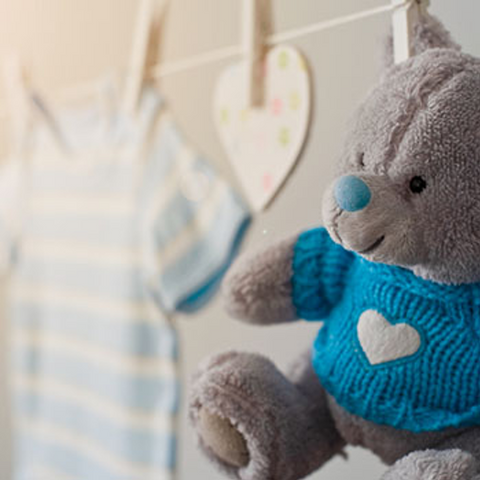
We know you love hanging your clothes outside to dry (we do too). But this habit may have to be placed on the back burner until your child is older. When laundry is hung outside on a clothesline, pollen and other airborne allergens can stick to the fabric.
For a child (or an adult) with normal skin, this wouldn’t be a problem. But for a child with eczema-prone skin, it can be the trigger that sets off an itchy outbreak.
Instead, dry your baby’s eczema-safe clothes in a dryer or by hanging on a line inside the house. The nice thing is that you may not have to do this forever.
By the age of five or six, the emollient product, like Mustela’s Stelatopia Emollient Cream or Emollient Balm, that you’ve been applying to your baby’s skin every day can repair their skin’s protective barrier. This means your little one will be less susceptible to allergens from the environment and may be able to tolerate clothes dried outside.
8) Apply An Emollient Product Before Dressing Your Baby

Applying an emollient product before dressing your baby is one of the best things you can do to help prevent eczema flare-ups. Cover your baby’s entire body in emollient cream before picking out their clothes. And don’t forget the particularly sensitive areas, like the backs of their knees and the insides of their elbows.
You can also apply our Stelatopia Emollient Face Cream to their little cheeks to protect them from clothes being pulled over their head.
A thin layer of cream or balm will protect their delicate skin from the triggers that cause flare-ups (e.g., rubbing, irritation, and heat).
9) Reapply An Emollient Product During Diaper Changes
Diaper changes are the perfect opportunity to reapply an emollient product. Your baby is half undressed already. Take a few moments before closing the diaper to rub a cream or balm on their legs, feet, and backside.
Once you’ve sealed the diaper, massage an emollient product into their belly, back, arms, and neck. Then redress your baby in eczema-safe clothes for continued comfort and happiness.
10) Wash Your Baby’s Clothes Before Dressing Them

Despite your best efforts, you’ll never get rid of all the dust in your house. Unfortunately, that dust can act as a trigger for your baby’s eczema. The stuff floating in the air isn’t a problem, but when it accumulates on surfaces, it can become an issue.
This is especially true of clothes that have sat unworn for several days. Dust can find its way between the fibers of your baby’s clothes. When it comes in contact with eczema-prone skin, it can cause a flare-up.
To prevent this, wash your baby’s clothes before getting them dressed. A quick rinse is really all that’s necessary, but be sure to dry the clothes thoroughly in the dryer. Then let them cool so the heat doesn’t irritate your baby’s eczema-prone skin.
11) Avoid Itchy Tags
Clothing tags are irritating for children without eczema, so you can imagine how itchy they would be for those with eczema-prone skin. Just that one point of contact can lead to an outbreak that can spread all over your baby’s body. But you can prevent this problem by removing the tags from all your baby’s eczema-safe clothes.
Cut the tags as close to the fabric as possible, and make sure there are no sharp edges that might poke your baby’s skin. If your baby’s skin still gets irritated by the harsh tag material, cover the leftover tag with a small piece of silk or soft cotton.
For best results, buy eczema clothes without tags whenever possible.
12) Make Sure Your Baby’s Clothes Don’t Contain Chemicals Or Dyes

Most modern clothing has chemicals woven into the fabric to prevent bacteria build up. While the lack of bacteria is certainly good for your baby, the chemicals themselves can cause problems for eczema-prone skin.
Even clothes without those chemicals added can still lead to eczema flare-ups. That’s because the dyes used to color the fabric can become an irritant against sensitive skin.
When purchasing eczema-safe clothes, be sure to read the label and always choose fabrics without added chemicals. And to avoid the dye issue, white cotton is your baby’s best friend.
Sometimes, though, manufacturers don’t list everything in their clothing (i.e., chemicals and dyes). So to protect against these potential allergens, add a layer of emollient cream or balm to prevent eczema flare-ups.
13) Cover Thick Seams
Thick seams are another potential source of irritation for your baby’s delicate skin. And, unfortunately, you can’t always tell just by looking (or even feeling) which seams will inflame your baby’s skin. You won’t know that the seams are an issue until they cause a flare-up.
But before you get rid of that cute shirt or adorable onesie that is perfect in every other way, use the trick we mentioned in the tag section (cover with silk) to make everything right again. Covering thick seams with silk or even thin cotton will help prevent poking, rubbing, and scratching that can trigger an eczema outbreak.
Alternatively, look for baby clothes that are seamless to alleviate this concern.
14) Consider A Protective Base Layer

Some clothing manufacturers offer protective base layers of all shapes and sizes that your baby can wear against their skin to prevent clothing from causing flare-ups.
These protective layers have the following unique properties:
- Thermo-regulation (keeps baby at just the right temperature)
- No harsh chemicals
- No dyes
- Flat seams
- Tags on the outside
- Ultra-soft materials
- Anti-itch fabric
Choose gloves, sleeves, leggings, socks, shirts, or even a full bodysuit with fold-over gloves. Combined with an emollient product, a protective base layer is one of the best ways to prevent clothing from becoming an issue for your baby’s delicate skin.
15) Wear Some Shirts And Pajamas Inside-Out
If you’re having a hard time finding just the right eczema clothing for your baby or young child, try letting them wear shirts and pajamas inside-out. By turning your baby’s clothes inside-out, you move the thick seams and itchy tags away from their sensitive skin.
This can be a great solution in a pinch when all your baby’s eczema clothes and eczema pajamas are dirty. Just grab any soft cotton, dye-free, chemical-free shirt or pair of pajamas, turn them inside out, and your baby is covered until you can get their regular clothes clean and ready to wear.
Also, be on the lookout for pajamas with zippers. The seams on either side, not to mention the zippers themselves, can irritate your baby’s skin and cause an eczema flare-up. Whether you wear them inside-out or not, a quick solution for this problem is to apply a layer of emollient cream or balm on the skin underneath and around the zipper. This will prevent an allergic reaction while your baby sleeps.
Keep Your Baby Comfortable All Night With Eczema Pajamas

One of the best ways to keep your baby comfortable and flare-up free is by dressing them in Mustela’s Stelatopia Skin Soothing Pajamas.
These special pajamas are designed for babies and toddlers with eczema-prone skin and deliver soothing moisture to your little one’s skin while they sleep. And with outside seams and tags, there’s nothing to irritate your child during the night. Finally, these pajamas also feature adjustable snap closures that allow them to grow with your baby and keep their skin protected for months to come.
Use our Stelatopia Skin Soothing Pajamas in conjunction with our Stelatopia Emollient Cream, Stelatopia Emollient Face Cream or Emollient Balm for complete, all-over eczema relief for your little one.


